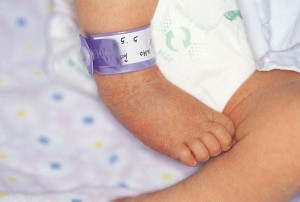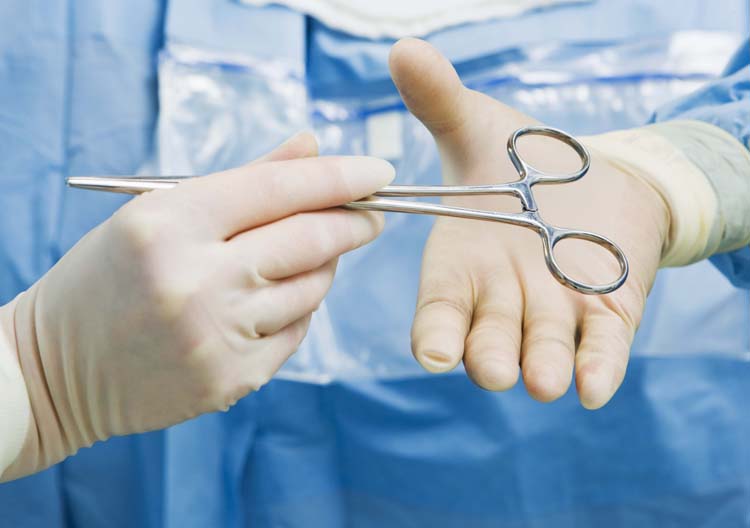The undercover videos from The Center for Medical Progress have revealed gruesome information surrounding modern-day fetal body parts trafficking, done under the guise of “research.” Most have reacted with shock at this news, but the fact is that experimentation and research using preborn human beings is not new.
In a revealing and well-researched article published at Catholic Stand this week, Stacy Trasancos, Ph.D., peels back another disturbing layer on research involving fetal body parts – this one from many years past, involving children born alive during hysterotomy abortions for the purpose of experimentation.

(via pinterest.com)
But the end goal of this experimentation makes these revelations even more disturbing. The researchers in this case killed children because they “sought to better design infant formula especially for prematurely born infants.”
According to Trasancos, researchers in New York and in Finland collaborated on a study, published in 1972, which “tr[ied] to determine whether cysteine is an essential amino acid in ‘immature humans,’ so they needed to analyze kidneys and brains at different developmental stages.” To do this, the researchers used not only premature and full-term infants who didn’t survive long after birth, but “58 human fetuses obtained at therapeutic abortion during approximately the 2nd-6th month of gestation.”
If the following information doesn’t disturb you, perhaps nothing will.
Trasancos writes:
The fetuses presented a special test case. Since the fetuses were still alive at the beginning of the experiment in their mothers’ wombs, “in vivo” experiments were possible. This phrase “in vivo” is Latin and means “within the living.” With already deceased specimens, they could only measure the presence of amino acids after death. This type of analysis is an “in vitro” (in the glass, think in vitro fertilization) procedure. With the still-living fetuses, they could actually inject a known amount of amino acids, S-L-methionine and S-L-cysteine, “in vivo” into a living fetus and test how much of these substances were incorporated into fetal organs via the biological machinery of life over a set amount of time. The researchers therefore conducted the “in vivo” experiments by surgically cutting open the uterus of the mother, lifting out the living fetus with the umbilical cord still attached, and injecting the amino acids into the umbilical vein.
Then they waited 10 minutes with the heart still beating and the fetus still moving to allow the body to distribute and metabolize the amino acids. After 10 minutes, they cut the umbilical cord, dissected the brain and liver from the body of the fetus, and dropped the organs into liquid nitrogen to await analysis.

(Baby born at 24 weeks; photo via ccoli.com)
What has been described, the “surgical[] cutting open [of] the uterus of the mother, lifting out the living fetus with the umbilical cord still attached” is known as a hysterotomy abortion. Basically, it’s like a C-section – only the objective is not to deliver a healthy child but to render it dead… eventually. The Society for the Protection of Unborn children lists the risks to the mother:
The risks of hysterotomy for the mother have long been known. They include peritonitis, rupture of the operation scar in a future pregnancy, thrombosis and pulmonary embolism (The [Lane] Report on the Working of the Abortion Act, Vol 1, HMSO, 1974).
Note that the reference listing these risks was published in 1974 – just two years after the publishing of the amino acid study. In other words, the researchers most likely knew the risks. But did the women know? Trasancos doesn’t believe researchers were all that concerned with the safety of the mothers, and may not have informed them about these possible complications:
A hysterotomy is a much more invasive procedure than a suction-aspiration procedure, which was certainly available in the 1970’s. Safe abortions (for the mother) are ones that reduce the risk of perforating the uterus as much as possible and reduce the risk of infection. It does not make sense to unnecessarily cut open the uterus and leave it open for an extended period of time if the safety of the mother is the first concern.
A suction-aspiration procedure, mentioned above, would have been applicable solely for those within the first or early second trimesters. For those closer to the sixth month, this would not have been an option. And as we can see from the Nazi-esque nature of the study, if the objective was to obtain intact, living children for the purpose of injecting them with a solution, the researchers would have likely ruled out suction aspiration entirely.
Speaking of the study’s nature, Trasancos says women may also have been in the dark about what was going to happen to their children:
The research paper did not mention whether the mothers gave consent or were informed of the procedure. One might wonder if the mothers were told that, while they were unconscious with their abdomens laid open, their unwanted children were used as living biological machines in the only 10 minutes they would live outside the womb. It is hard to imagine that any woman would agree to such an experiment regardless of how much she did not want to be pregnant or raise a child.

Eva and Miriam Mozes
Keeping mothers in the dark, performing risky procedures, aborting children alive – these are dreadful enough. But using this information to try and help other children is absolutely inexcusable. In fact, as Susan Michelle wrote in a Live Action piece this month, using unethical methods of experimentation to obtain information that might benefit others was banned in the U.S. after World War II, thanks to the lessons learned there about Nazi medical experiments – like those on Mengele’s twins (pictured right are Eva Mozes Kor and her sister, Miriam). Steps were taken to try and prevent such inhumanity in the future:
The basis for federal research guidelines… has roots in the Holocaust’s biomedical experiments, which became part of the basis for something called The Belmont Report, born from the Nuremberg trials after the Nazi’s conducted biomedical experiments, is the guideline for human subjects research….
The Belmont Report laid out guidelines for the respectful and humane treatment of subjects involved in experimentation and research. But even if the personhood of these living fetuses were to be wholly ignored, the likelihood that mothers were not fully informed should have stopped the New York researchers in their tracks. Why did no one object to this horrifying practice or question the Finnish researchers? Trasancos writes:
These facts have been in the academic record for over 40 years. Was there no outcry? No controversy? What? Did people just trust the academics blindly? I do not know. A million questions can be asked about why anyone thought this kind of research was remotely acceptable. Yet, here we are in 2015 in shock as if all of this behavior began overnight, speculating about whether it is all really true or not. It is true. Those “in vivo” experimental procedures are not speculation, indication, or accusation. They are as true as if the researchers confessed the activities to the public in their own handwriting—because they did.
Yes. They did. And for what?
The end use of this work was to provide information about feeding newborns. In the conclusion, the authors noted that “infants of low birth weight who are fed a formula with the same quality of protein as that in human milk should grow as well.” (Proteins are large biomolecules made of long chains of amino acids.) The experiment was part of a broader set of experiments to understand the kind of protein newborns need to be fed in milk formulas. By understanding the differences in how fetuses process amino acids compared to infants and children, the researchers sought to better design infant formula especially for prematurely born infants….
The idea that it is acceptable to use, kill, and harvest children for the research of their body parts seems to be far too entrenched in the scientific community and is considered ethical. The roots of this tree, so to speak, do indeed run deep and wide.
Because this kind of research has been going on for decades – in which intact (and even live) preborn children have been killed and dissected for the sake of science – Trasancos says “Planned Parenthood could shut down completely tomorrow, but the use of aborted fetuses and fetal body parts will not stop.”
What we are doing is sacrificing some children for the perceived benefit of others. It seems we have learned very little from the inhumanity of the past.
(Editor’s Note: Sections of Ms. Trasancos’s article reprinted here with permission.)







